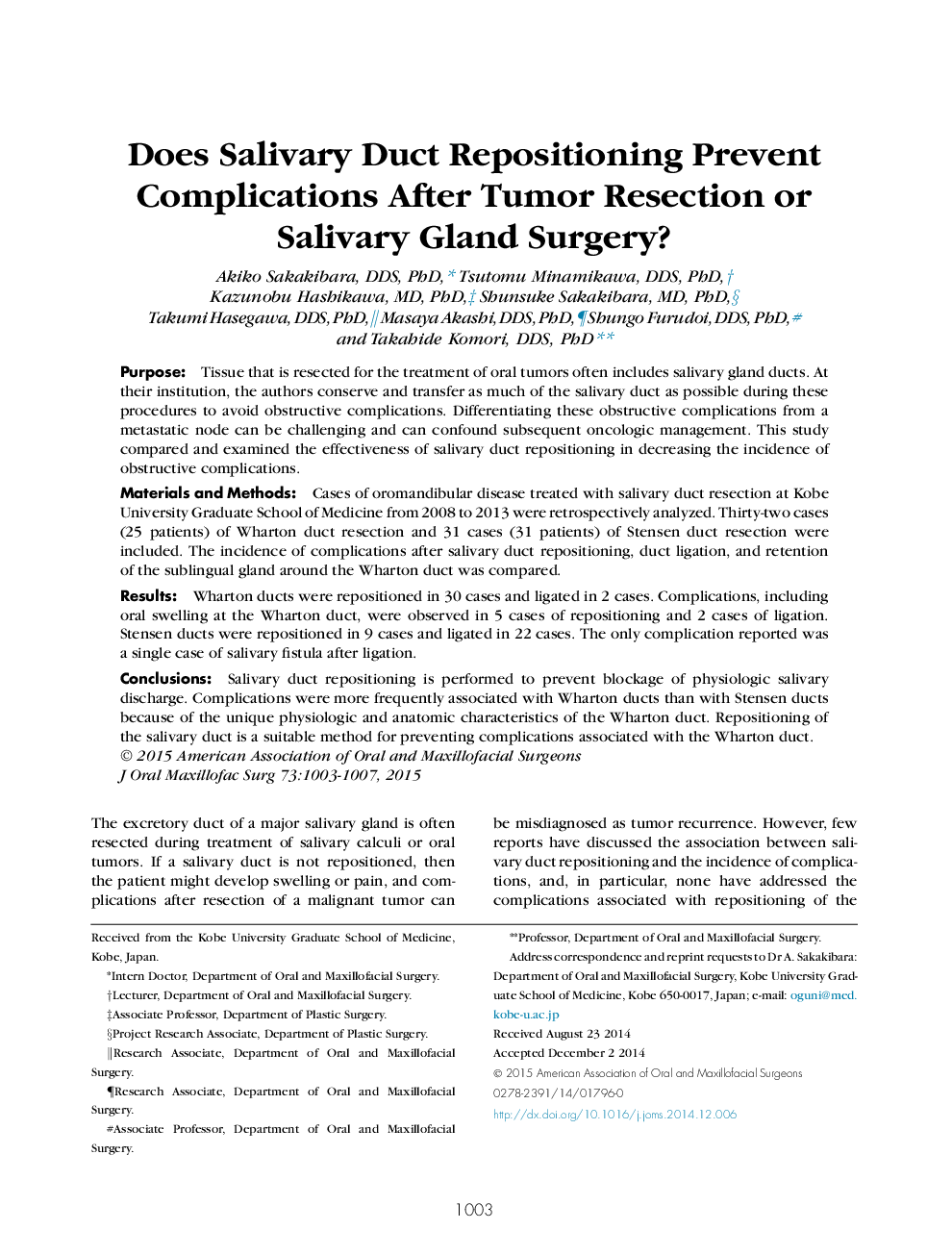| Article ID | Journal | Published Year | Pages | File Type |
|---|---|---|---|---|
| 3152485 | Journal of Oral and Maxillofacial Surgery | 2015 | 5 Pages |
PurposeTissue that is resected for the treatment of oral tumors often includes salivary gland ducts. At their institution, the authors conserve and transfer as much of the salivary duct as possible during these procedures to avoid obstructive complications. Differentiating these obstructive complications from a metastatic node can be challenging and can confound subsequent oncologic management. This study compared and examined the effectiveness of salivary duct repositioning in decreasing the incidence of obstructive complications.Materials and MethodsCases of oromandibular disease treated with salivary duct resection at Kobe University Graduate School of Medicine from 2008 to 2013 were retrospectively analyzed. Thirty-two cases (25 patients) of Wharton duct resection and 31 cases (31 patients) of Stensen duct resection were included. The incidence of complications after salivary duct repositioning, duct ligation, and retention of the sublingual gland around the Wharton duct was compared.ResultsWharton ducts were repositioned in 30 cases and ligated in 2 cases. Complications, including oral swelling at the Wharton duct, were observed in 5 cases of repositioning and 2 cases of ligation. Stensen ducts were repositioned in 9 cases and ligated in 22 cases. The only complication reported was a single case of salivary fistula after ligation.ConclusionsSalivary duct repositioning is performed to prevent blockage of physiologic salivary discharge. Complications were more frequently associated with Wharton ducts than with Stensen ducts because of the unique physiologic and anatomic characteristics of the Wharton duct. Repositioning of the salivary duct is a suitable method for preventing complications associated with the Wharton duct.
